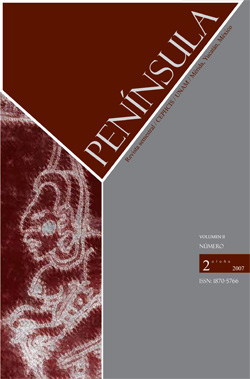U glotalizacionil le káastlan ku t’a’ana’al yucatano’: ba’ax yaan u yil yéetel le maaya t’aano’
Main Article Content
Abstract
This study deals with a phonological feature in the grammar of Yucatan Spanish, referred to as “glottalization”, which we will explain as an effect of the contact between, Spanish and Maya of Yucatán, Mexico. We will analyze the production of the voiceless stops /p t k/ in Yucatan Spanish, in order to show that the Maya glottal phenomena occur systematically in the Spanish spoken in Yucatan. The primary data for our study were taken from spontaneous speech and lists of Maya and Spanish words and texts read aloud by 45 speakers in Yucatan (bilingual and monolingual Spanish and/or Maya) with a high, intermediate-high level of instruction or illiterate. For the experimental analysis of the data, oscillographic as well as spectrographic acoustic variables were studied, such as amplitude, duration of the resonance of the noise of explosion, the VOT (voice onset time), and the evolution of the formants. Another part of the study was based on the use of the laryngograph, which permits the registration of the opening and closing of the glottis, the voice quality and the duration of the glottic cycles. The third and final technique was based on fibroscopy, which enables the precise observation of the laryngeal structures. The need to contrast these phonetic phenomena, which are unknown in the standard variants of Spanish, and difficult to identify, shows that, more than in other sciences, visual observation plays a decisive role in phonetics.
Downloads
Download data is not yet available.
Article Details
How to Cite
Colazo-Simon, A., & Chan May, G. A. (2008). U glotalizacionil le káastlan ku t’a’ana’al yucatano’: ba’ax yaan u yil yéetel le maaya t’aano’. Península, 2(2). https://doi.org/10.22201/cephcis.25942743e.2007.2.2.44341
Citas en Dimensions Service
Universidad Nacional Autónoma de México (UNAM), todos los derechos reservados 2013-2013.
